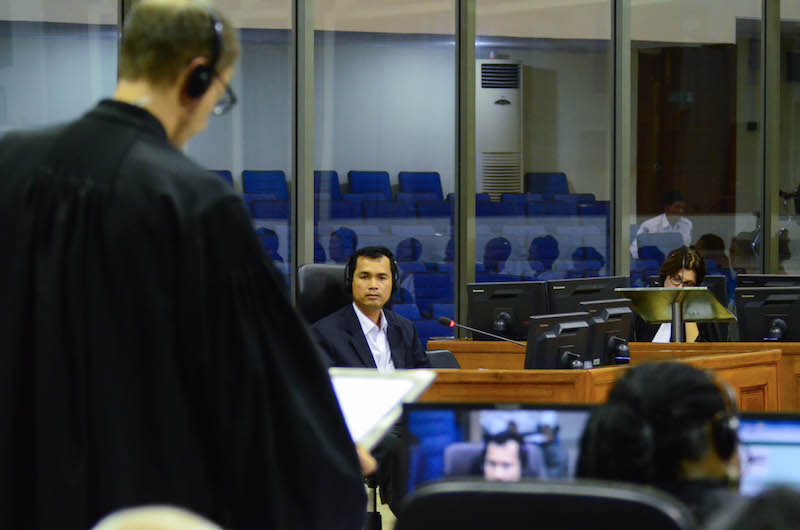The Khmer Rouge tribunal on Wednesday attempted to clarify discrepancies between tallies of the dead at several mass graves around the country as an expert witness gave an account of insects eating bones kept in wooden stupas and locals picking over corpses.
“Before the remains were collected and preserved in a wooden stupa, no one conserved them,” witness Voeun Vuthy said, describing a burial site at a Khmer Rouge security center in Takeo province.

“Some fell back into the mass graves. Some were eaten by cattle.”
The questioning, led first by Nuon Chea’s defense lawyer Victor Koppe, then by prosecutor Dale Lysak, focused on the remains of thousands of people unearthed at two sites at which Mr. Vuthy conducted forensic studies—Choeung Ek in Phnom Penh and Kraing Ta Chan in Takeo.
The number of distinct human remains that Mr. Vuthy counted differed, often by thousands, from early counts by local officials exhuming the graves in the turbulent years after the war.
At the Choeung Ek killing fields, for example, while the Kandal province’s department of Culture and Propaganda put the number of skulls found at the site at 8,985 when they exhumed it in the early 1980s, Mr. Vuthy found 6,426 crania—all of which are now kept in a concrete stupa in front of the site.
Neither total, he said, represents the true number of people killed there. A dam was built near Choeung Ek at some point, and several pits were flooded. In the years after the war, “ordinary people went to exhume these graves, searching for hammock strings or new clothes, because they were indigent.”
Later, he said, the practice was banned by the authorities who began exhuming the site.
The unearthed skulls were then left out for two or three years, he said, before being kept for another three years in a wooden stupa open to the elements. It was 1988 before the concrete stupa was built.
Over the years, skulls could have been lost through a number of means, he said. It is recorded that some were borrowed for an exhibition in Vietnam on the horrors of the Khmer Rouge regime. Those were never returned. Some are displayed in Phnom Penh’s Tuol Sleng Genocide Museum.
Some, he said, rotted or fell back into the pits or were eaten by insects or animals.
Meanwhile, at Kraing Ta Chan, cattle wandered the hillside and families came privately to search for their dead for a long time.
Eventually, according to photographs of the site, skulls were heaped into spare wooden huts, their woven walls open to rats and the elements.
“It wasn’t until 1998 that there was a guard standing at the foot of that mountain,” Mr. Vuthy said.



